Demystifying Laser Vision Correction Like LASIK with Answers to the Top 8 Questions
Have you ever pondered the allure of laser vision correction (LVC) like LASIK and why it’s a choice embraced by many?
If you find yourself intrigued or contemplating this transformative journey, you’ve landed on the perfect platform. Join us as we unravel the top 8 questions surrounding laser vision correction, providing you with the clarity you seek about a life free from corrective lenses.
1. Why is Laser Vision Correction Like LASIK Necessary?
Laser Vision Correction, such as LASIK, becomes necessary when refractive errors, including myopia, astigmatism, hyperopia, and presbyopia, disrupt the proper bending of light due to the shape of the cornea or lens. A refractive error occurs when the eye fails to refract or bend light correctly, impacting the focus on the retina. Much like the rapid advancements witnessed in cell phones and computers, laser vision correction has made significant strides in recent years. Utilizing modern technology, it is now possible to enhance visual acuity beyond the limitations imposed by conventional glasses, effectively addressing myopia, hyperopia, astigmatism, and even presbyopia.
However, LASIK may not be suitable for everyone. It is crucial to consult with a refractive surgeon to explore alternative modern options that can provide clear vision without the need for external aids. These alternatives encompass various laser procedures like PRK and PresbyLASIK and implantable lenses, offering personalized solutions for individuals who may not be ideal candidates for LASIK.
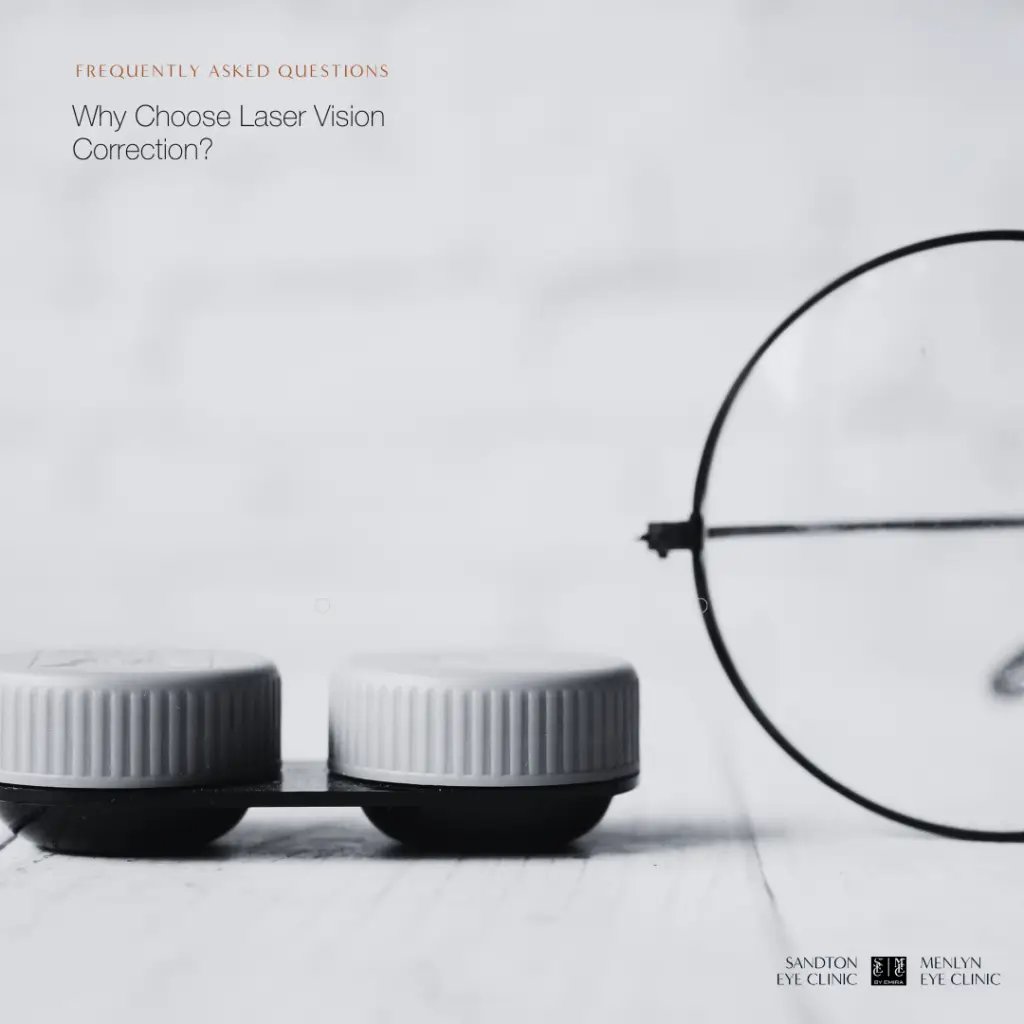
2. Who Qualifies for Laser Vision Correction (LVC)?
Have you ever envisioned waking up to a world of clarity, free from the reliance on glasses or contact lenses? If the prospect excites you, Laser Vision Correction (LVC) might be the transformative solution you’ve been seeking.
If you’ve embraced the idea of wearing glasses and find joy in that choice, LASIK may not be the path for you. However, for those intrigued by the possibility of visual freedom, read on.
Typically, before the age of 18, your eyes are in a state of maturation. During this phase, your optometrist focuses on correcting refractive errors and preventing further progression. Glasses or contact lenses become companions during this period. The magic age of eligibility for Laser Vision Correction begins at 18, opening the door to the potential of spending a significant portion of your life without the need for corrective lenses.
LVC effectively addresses and permanently corrects your existing refractive errors. While it doesn’t thwart the natural aging process of your eyes, around the age of 45, the need for reading glasses may arise. Enter PresbyLASIK, a supplemental procedure that eliminates the reliance on readers. As you approach 65, cataracts might make an appearance, signaling the need for cataract surgery. Fear not, as multifocal lenses provide an option to maintain independence from spectacles.
The landscape of vision correction has evolved, presenting a myriad of options beyond LASIK. Modern refractive surgery has paved the way for permanent solutions for most individuals, even those who were previously ineligible for LASIK. Embark on a journey of possibilities by consulting with your refractive surgeon to explore the best course of action for achieving visual freedom.
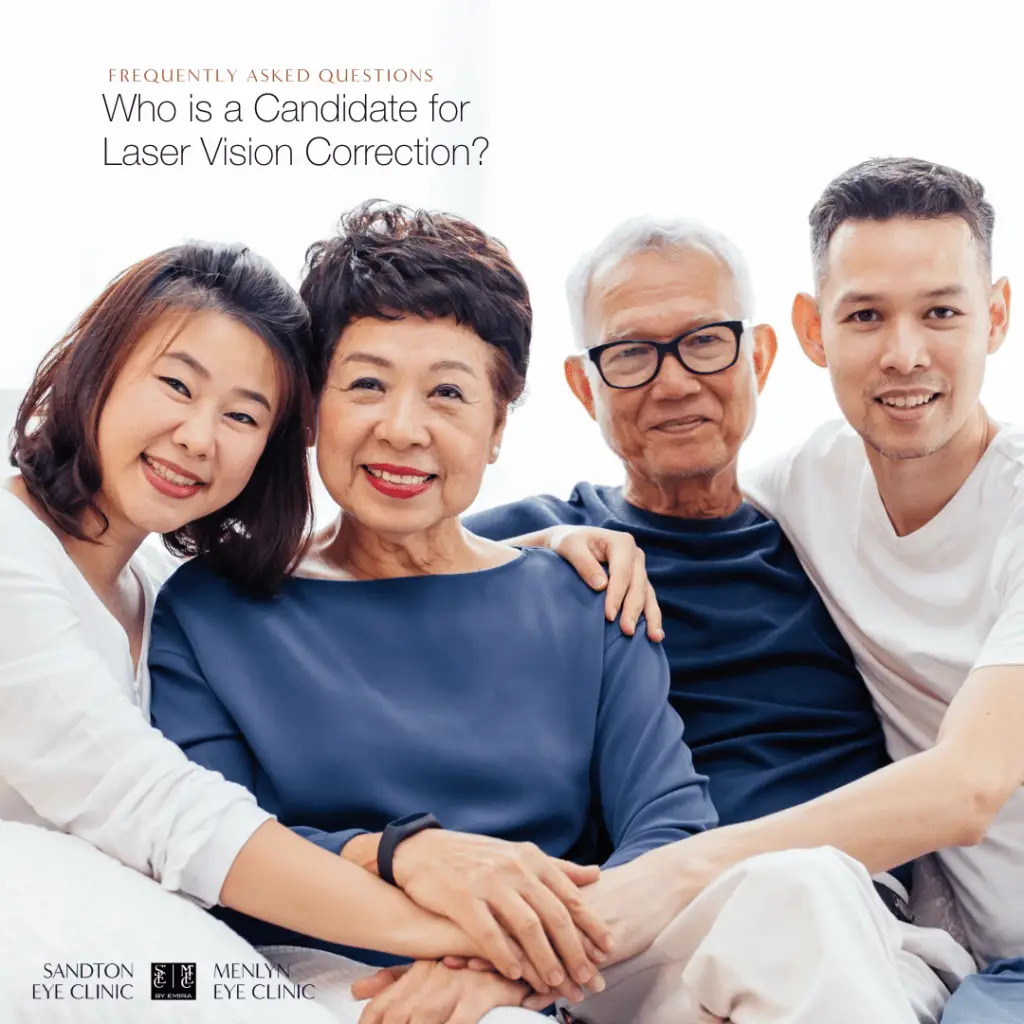
3. Is LASIK a Safe Option for Vision Correction?
Addressing safety concerns is paramount when considering any medical procedure, and LASIK is no exception. It’s crucial to acknowledge that, like with any medical intervention, there are potential risks. However, it’s reassuring to note that serious complications arising from LASIK are exceptionally rare. Temporary side effects such as dry eyes, halos, and glare are more common, but they typically subside within weeks to months post-surgery. The incidence rate of serious complications is impressively low, standing at less than 0.3%.
To substantiate the safety claims, it’s essential to turn to hard evidence. The FDA conducted comprehensive studies, namely PROWL-1 and PROWL-2, examining patient outcomes post-LASIK. The results were overwhelmingly positive, with 99% satisfaction reported in PROWL-1 and 96% in PROWL-2. Patients were askedabout their outcomes one month, three months and six months after surgery. When taking into consideration that it can take up to six months for full visual recovery after LASIK, these are impressively high satisfaction rates.
For individuals leading active lifestyles, the impact on quality of life is a significant factor in their decision-making process. The decision to undergo LASIK is highly personal, and it’s worth is subjective. It’s important to note that glasses, being a non-invasive option, are inherently safe. If you find contentment in wearing glasses, LASIK may not be the ideal choice for you. However, for those with active and adventurous pursuits, glasses may present safety challenges. Research suggests that the cumulative risk associated with contact lenses may actually exceed that of LASIK. Studies indicate that individuals using contact lenses face a tenfold higher risk of sight-threatening corneal infections compared to those who opt for LASIK.
In the end, all vision correction options, including LASIK, are generally considered safe. To determine the safest choice based on individual lifestyle, hobbies, and sports, a thorough discussion of options and potential risks with a qualified refractive surgeon is crucial. Your surgeon can provide personalized guidance to ensure you make an informed decision about your vision correction journey.
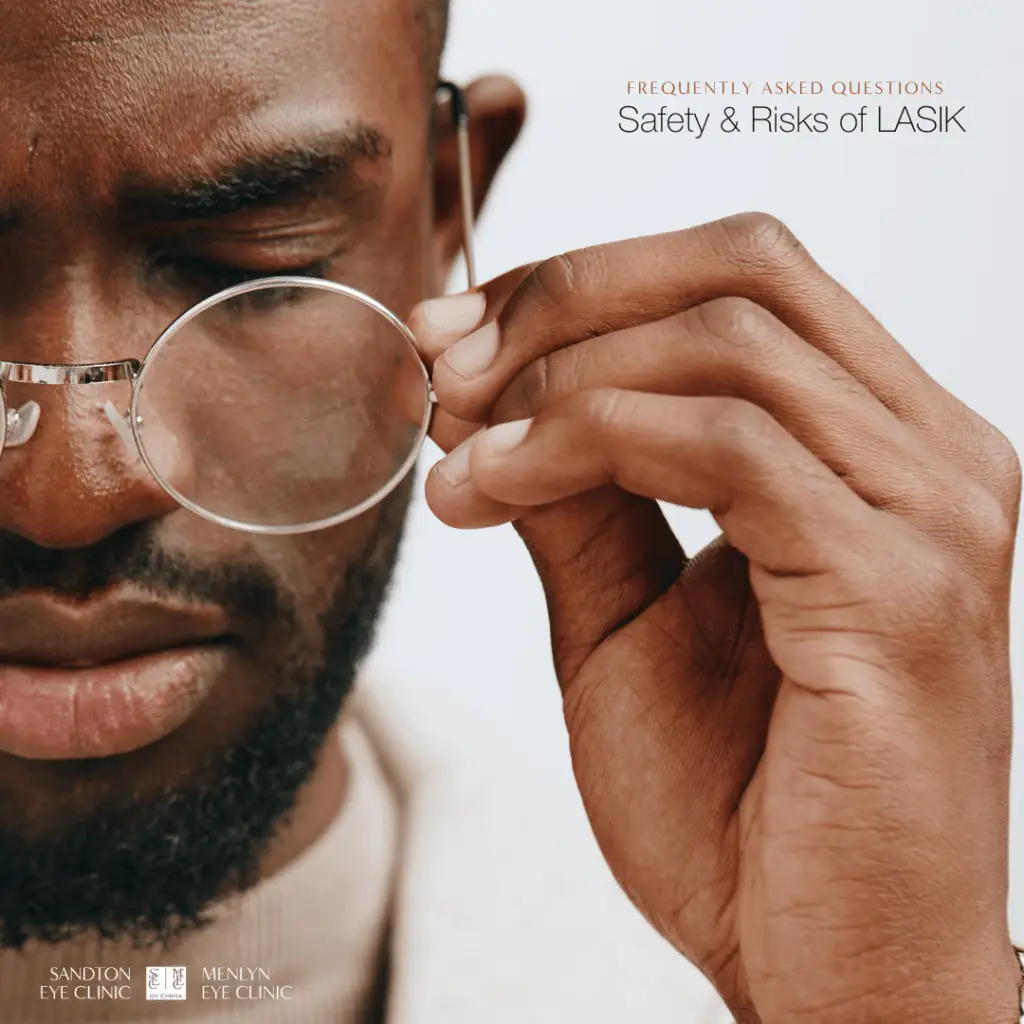
4. Preparing for your Vision Correction Procedure
If you know what to expect, this life-changing journey to visual freedom can be stress free.
The healing process starts even before the surgery is performed. By following a few pre-procedure instructions, your recovery may be smoother and complication free.
- STOP WEARING CONTACT LENSES BEFORE YOUR PROCEDURE: We understand that living without your contact lenses may be a challenge. Wearing contact lenses change the shape of your cornea. Lasik is a very precise surgery that reshapes of your cornea, and it is important for the cornea to be in its natural state. Your eye surgeon will give you instructions on when to stop wearing your contact lenses. It may be anything from 1 week (for soft contact lenses) to 6 weeks (for hard contact lenses).
- AVOID ALCOHOL: Alcohol dehydrates your eyes. For optimal healing it is advised to avoid alcohol for 24 hours before and 48 hours after surgery.
- STAY WELL HYDRATED: Drink enough water for the few days before and weeks after LASIK. This will keep your eyes hydrated during the healing process.
- Things to arrange in the week before LASIK: Do your house cleaning before your procedure. You will have to avoid dust in the days after your procedure. On the day of your procedure, you will have to arrange transport to and from the eye clinic.
- On the day of surgery: We know that having a procedure is daunting. Most of our patients are surprised at how quick the procedure is with minimal discomfort. Try to get a good night’s rest the evening before. Wear loose comfortable clothing. It is best to wear lint free clothing and avoid fabrics like wool. Although any lint in the surgical field can simply be washed away it is best to avoid it. Do not use any perfume or make-up.
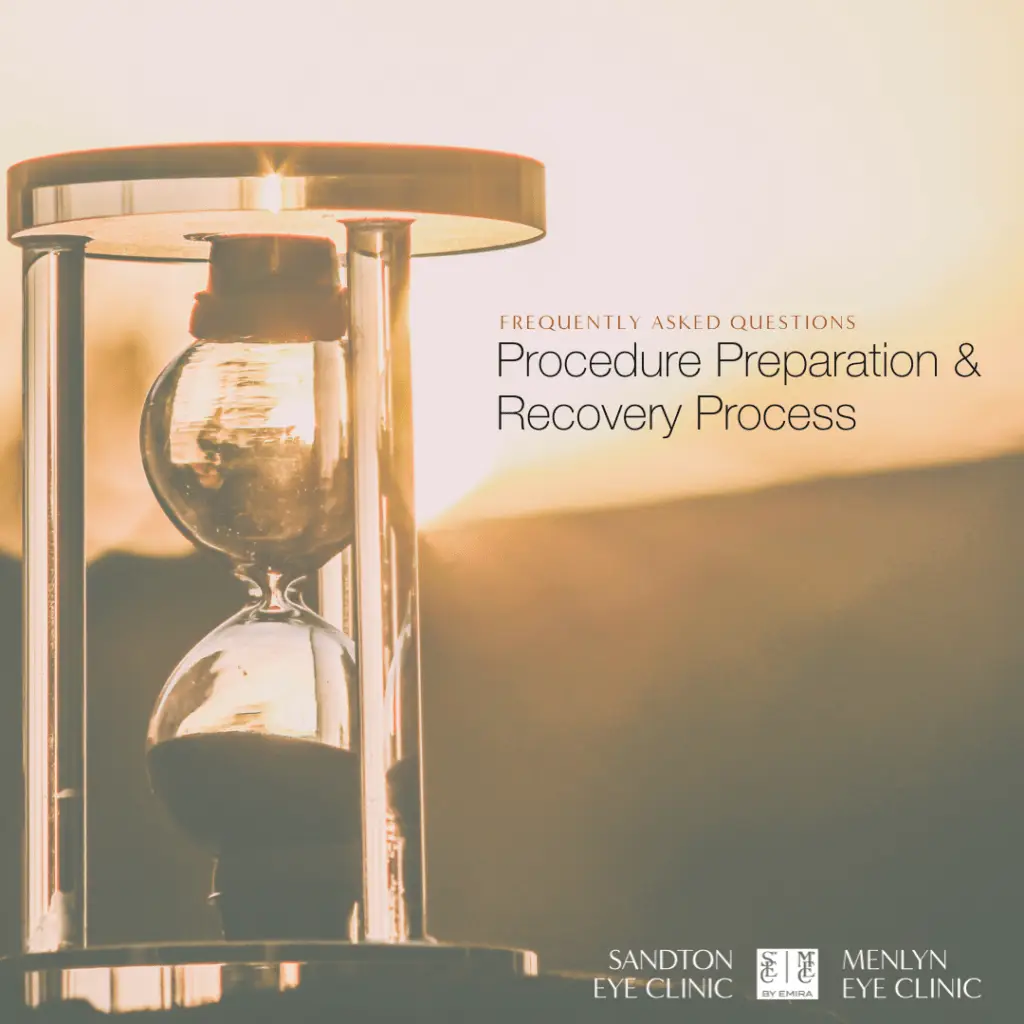
5. LASIK vs. PRK: What to Expect During Recovery?
While LASIK and PRK have similar long-term outcomes, LASIK offers a more convenient recovery. You can likely return to your routine the day after LASIK, with clear vision and minimal discomfort. PRK has an initial recovery of about 1 week, with full recovery taking up to 6 weeks.
Most patients have clear vision within 24 hours after LASIK. This may vary from person to person. Common and expected side effects include: mild discomfort and teary eyes for about 2 hours; blurred vision clearing about 6 hours after the procedure; glare & halos at night; dry eyes and light sensitivity. These should improve through the night, some of these may last about 3 months. The next morning your vision should be at about 95% of what it will settle to be.
The healing process for PRK takes longer than LASIK because the epithelium is removed from the eye’s surface. The epithelium takes 3-4 days to heal. During this time, you will experience discomfort and very blurry vision. After a week your vision begins to clear up. It may take around 6 weeks for your vision to become excellent. During this time your vision will fluctuate. Visual clarity and crispness continue to improve for 3-6 months and then stabilize. Common and expected side effects include: discomfort for about 3 days; fluctuating vision for up to 6 months; dry eyes and light sensitivity.
After Laser Vision Correction avoid getting soap and water in your eyes when showering for 1 week. Do not apply makeup until after your one-day follow-up exam. No swimming or other activities in the ocean/ rivers for a month.
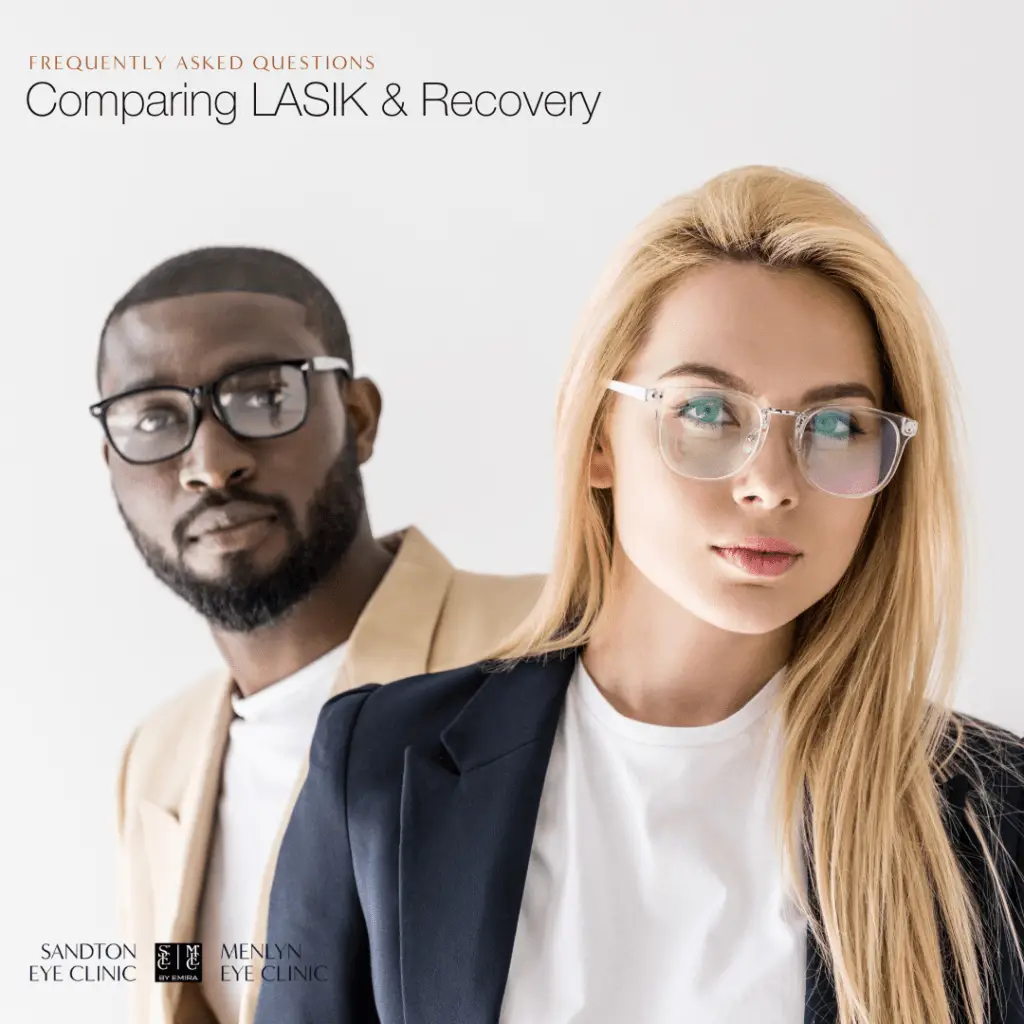
6. What is PresbyLasik and how does it work?
Wearing reading glasses is the most common way of dealing with presbyopia. This is a temporary solution. With modern options surrendering to reading glasses is not your only option. Permanent solutions include PresbyLasik and Refractive lens exchange. PresbyLasik is similar to LASIK but blended vision is used to achieve near, intermediate and far focus. This can also be used as a top-up when developing presbyopia after you had LASIK years before. When you are starting to show signs of cataracts developing or are at a more advanced age Refractive lens exchange might be a better long-lasting solution for you. The biggest advantage is never searching for your reading glasses again.
Our brain’s wonderful ability to adapt is central to presbyopic laser vision correction. Prior to PresbyLasik a tolerance test is essential to determine if it will be well tolerated by your brain. The principle behind Presbyopic laser vision correction is extended focus. Each cornea’s shape is changed ever so slightly by the removal of microscopic amounts of tissue at pre-determined positions to correct the refractive error and extend the depth of focus. Each cornea will have a resultant stronger focus in the center and slightly weaker towards the periphery with a smooth transition. The non-dominant eye has the strongest focus for near objects and the dominant eye has the strongest focus for far objects. Amazingly with both eyes and the brain working together your near and distance vision will be better than with each individual eye. A long overlap in the intermediate area ensures effortless focus.
The adaption is not instant, and vision will improve over a timespan of about 6 weeks to 3 months. Please remember that as yet there are no surgical or non-surgical options that are as good as the natural healthy human lens in a young person. Between 95% and 98% of laser blended vision patients can read normal newsprint and 80% to 96% can read the very smallest print on medicine bottle inserts without reading glasses.
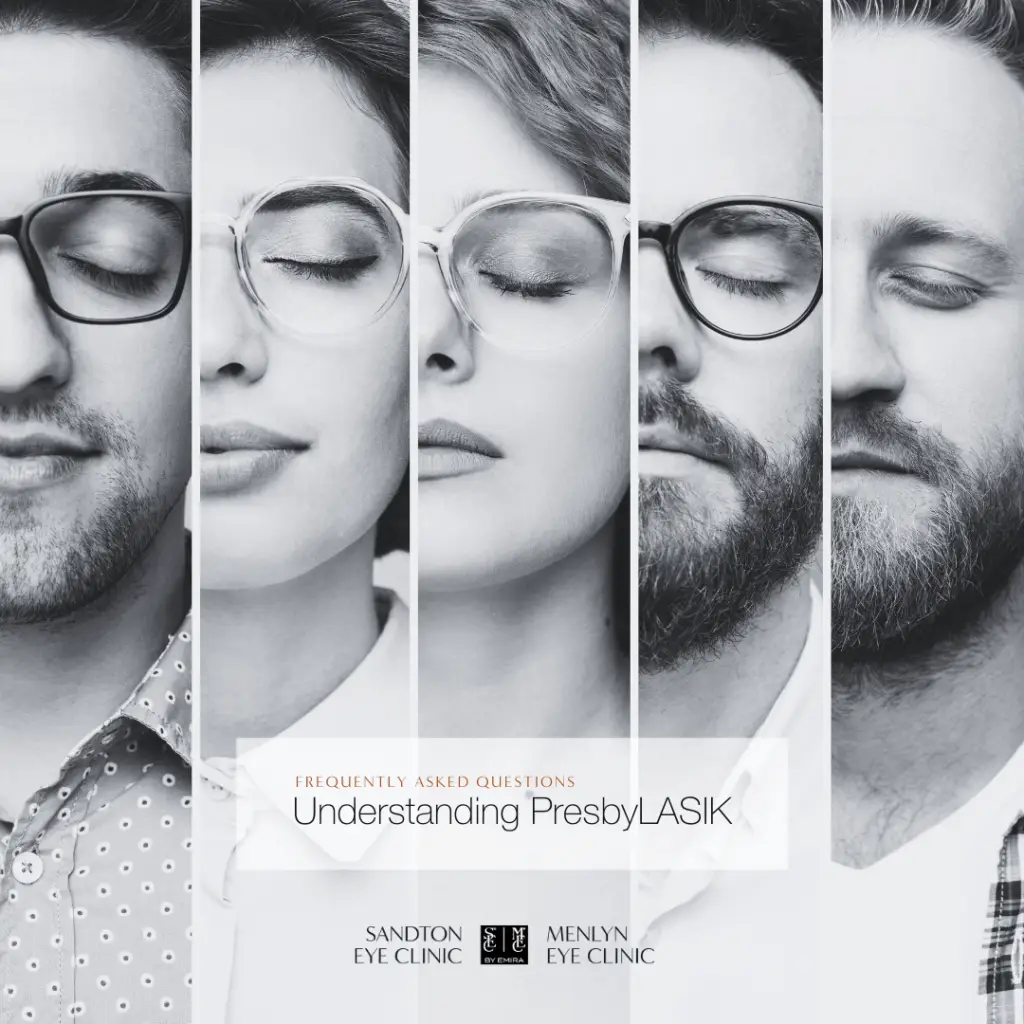
7. Is LASIK vision correction a permanent solution?
LASIK is a laser vision correction procedure that treats refractive errors permanently. When the surgery is performed by an experienced surgeon using a careful screening process, the rate of success is very high. As our aim is perfection and the healing of patients may differ, less than 5% of patients may need an enhancement in the weeks following their procedure.
In some cases, years after LASIK your vision might not be as sharp as the first few years after the procedure. This is called regression, even though it can happen it is unlikely. Each year after LASIK there is a slightly increased chance of needing retreatment. Similar to wearing glasses, LASIK does not prevent your eyes from changing from other diseases or old age. Around the age of 45 you will start wearing reading glasses. This can be corrected again with a laser procedure called PresbyLasik. Later in life old age will also give you cataracts or macular degeneration which would need a whole different treatment approach.
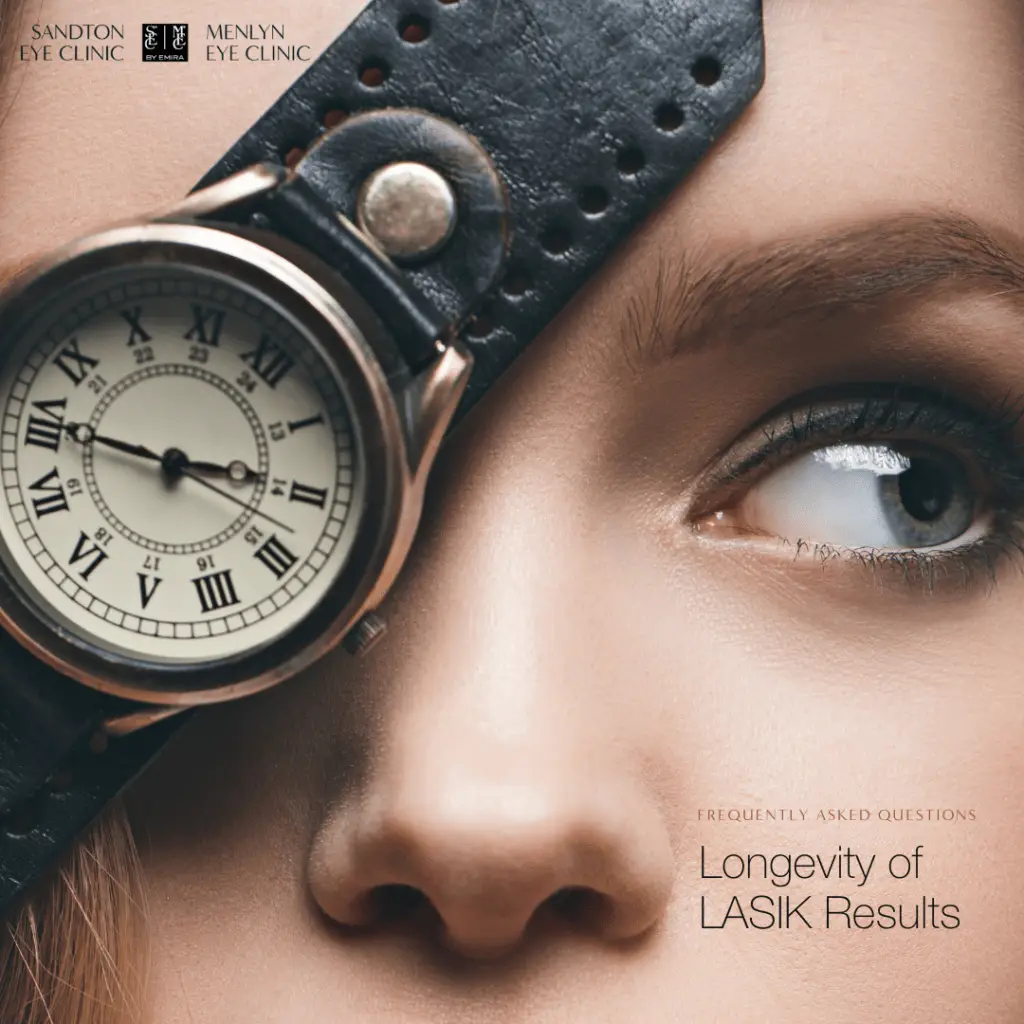
8. What if I'm Not a LASIK Candidate?
Most patients are candidates for LASIK, it is currently the gold standard in Laser Vision Correction. Because surgery is done under a flap only the edges need to heal. Recovery is fast and most people can return to work in 24 – 48 hours. LASIK can also treat fine unevenness that is not corrected by glasses and contacts with the possibility of having even better vision than with your glasses.
PRK is used when it is not possible to do LASIK in patients with thin corneas or if you have scars that can be treated simultaneously. Recovery time is the longest of all the options. Although the treatment is pain free, post op eye discomfort can last up to 7 days. Long term visual outcomes are like LASIK.
A Secondary lens is a special kind of lens that is implanted surgically into the eye to correct refractive errors. The eye’s natural lens is left untouched. It is almost like a permanent contact lens being implanted in the eye. These implantable lenses are indicated for patients with high refractive errors when laser options for surgical correction (Lasik and PRK) are contraindicated. These lenses are designed to correct high myopia ranging from −5 to −20 D.
If you are around 45 and need reading glasses the above surgical options can also come with presbyopia correction. Your natural lens can also be replaced with a multifocal lens. This is called refractive lens exchange. By age 65 cataracts will start to develop and you will need cataract surgery. Once again you can choose multifocal lenses and keep your spectacle independence.
Embarking on a laser vision correction journey is life-changing. Consult with your refractive surgeon to explore options to see clearly with your own eyes, and nothing else. If you have other eye diseases it is essential that they are well controlled. This will be treated on a case-by-case basis by your refractive surgeon.
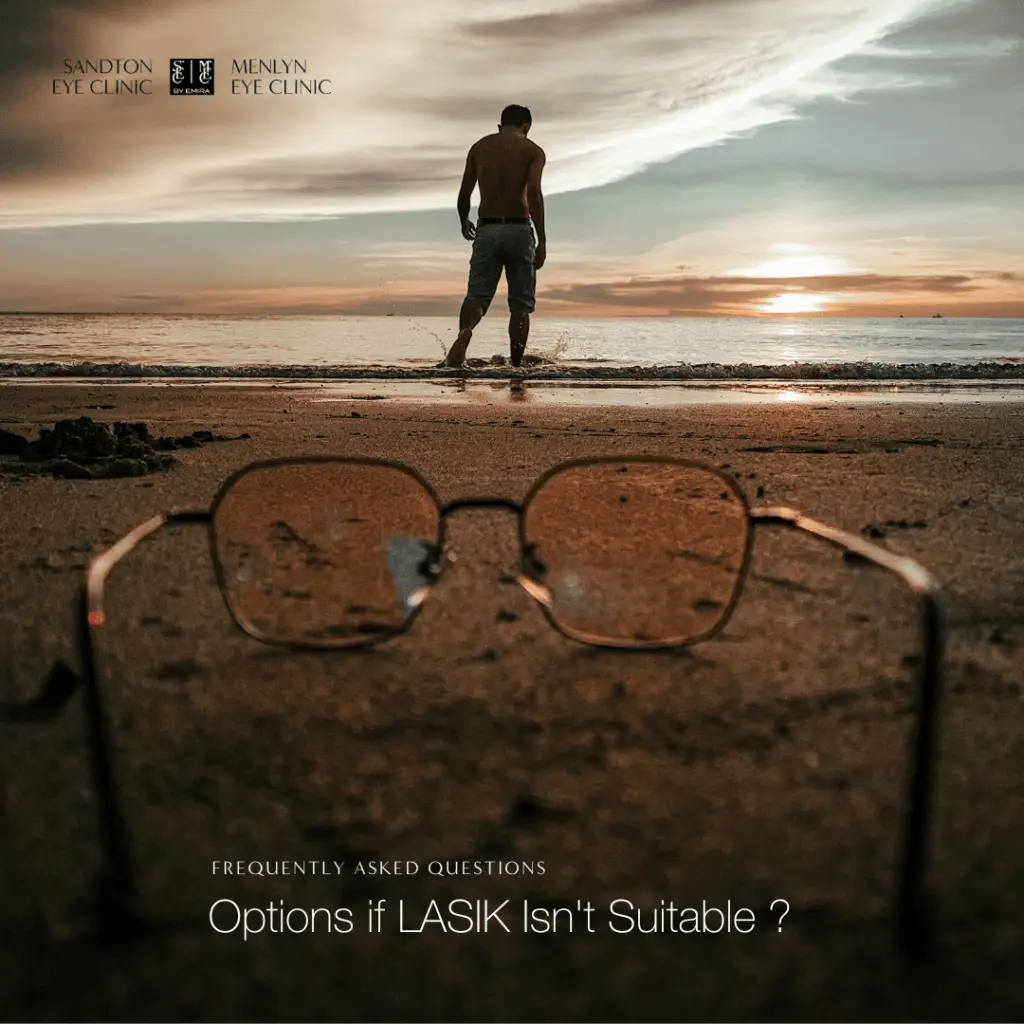
Like this article, share with your friends below:
Disclaimer
Laser Vision Correction Costs 14 February – 30 April 2024
👩🏽⚕️👨🏻⚕️👩🏻⚕️Consultation at Discovery Classic Direct Rates Max R4 300
Procedure Cost:
👁️LASIK | PRK R29 000 | 🔎PresbyLASIK R35 000
🗓️Post Procedure Follow-Ups: No Charge
⏳🗓️3 Month Follow Up: R 1 500
💰 We offer MediWallet & ZeroPay as medical financing options.
Disclaimer: Glasses are safe because there is no medical procedure involved. If you are happy to wear glasses LASIK is not for you. LASIK is a lifestyle procedure providing unaided vision. According to research the cumulative risk of contact lenses may be more than LASIK. Three-Year Longitudinal Survey Comparing Visual Satisfaction with LASIK and Contact Lenses https://pubmed.ncbi.nlm.nih.gov/27208981/

